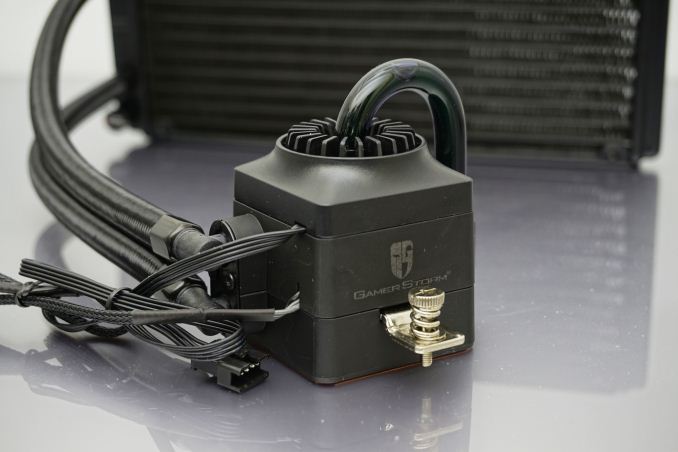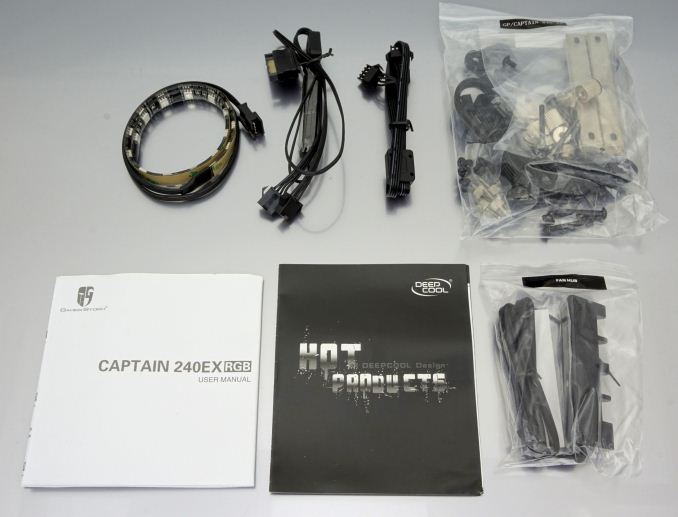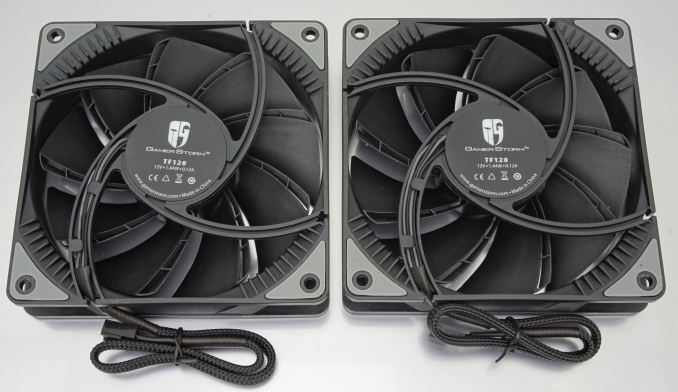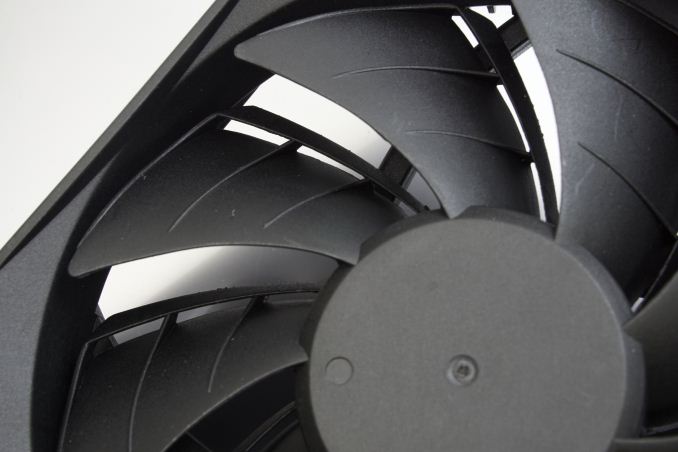The DeepCool Captain 240 EX RGB AIO Cooler Review: Pump it Up, Without the Noise
by E. Fylladitakis on December 14, 2017 9:00 AM EST- Posted in
- Cases/Cooling/PSUs
- AIO
- Deepcool
- Cooler

Liquid cooling is far from a new concept when it comes to personal computers, with the first retail products having surfaced back in the 90’s. Still, liquid cooling remained an experts-only option for many years, both because of its cost and its complexity. That all changed not too long ago, when Asetek presented their first “all-in-one” (AIO) concept liquid cooler. As the name suggests, it was a preassembled liquid cooling system that the user only had to install into the case/system, a process of equal difficulty as that of any advanced air cooler.
With a product that is both economically competitive and ready to install, AIO coolers soon flooded the PC components market. Fast forward to today, there are dozens (if not hundreds) of AIO liquid coolers available from numerous manufacturers, even from manufacturers that do not produce air-based or other cooling solutions. With that much competition available, each manufacturer is trying to differentiate their products in their own way(s) and not necessarily compete in terms of raw performance.
In today's review we are taking a look at the Captain EX 240 RGB AIO cooler from DEEPCOOL, one of the best-established Chinese manufacturers of PC cooling solutions. DEEPCOOL upgraded their earlier series of Captain EX coolers and virtually added only RGB lighting. As we have not had a look at their products for quite a long time, we decided to put the new Captain EX 240 RGB to the test and examine its design and thermal performance, which should also be representative for the non-RGB version of the cooler as well.
Packaging & Bundle
DEEPCOOL ships the Captain EX 240 RGB AIO cooler in a large, strong cardboard box. The artwork is based on simple geometric shapes but is colorful, hinting the concept behind this cooler’s design. Inside the box, we found the cooler and its accessories well protected into a custom cardboard insert.
The typical bundle of AIO coolers consists of the mounting hardware and an installation guide. DEEPCOOL added a couple of extra items to it, which are a plastic fan hub and an RGB LED strip. The triangular fan hub can be attached to anywhere the user desires to power the cooler’s fans. It can power four fans, so two more fans can be added to the radiator for a push-pull configuration if required, or other case fans can also be attached to it. The RGB strip is a welcome addition that surely every user with a windowed side panel will appreciate. It comes with all of the necessary wiring/controller required for it to work in parallel with the RGB lighting onboard the cooler.
The two 120 mm fans supplied alongside with the Captain EX 240 RGB are unique designs from DEEPCOOL themselves, with the blades forming a rectangular channel across their bottom edge. This “2-layer” blade design is supposed to reduce air turbulence noise while maintaining a high pressure. The fans have fluid dynamic bearing (FDB) engines and, interestingly, the blades can be removed from the frame for easy cleaning or replacement. DEEPCOOL is offering the fan blades in several colors.














34 Comments
View All Comments
IdBuRnS - Wednesday, January 3, 2018 - link
You don't think your readers want to know if a cheaper and more standard fan/heatsink cooler works better than one of these bulky AIO units? Seriously?Stuka87 - Monday, December 18, 2017 - link
I have never used an air cooler that can work as well as an AIO cooler. Sure it would be nice to see them compared, but a liquid cooler can handle a MUCH higher load than a heatsink and fan can. And I have used the same CPUs with both style coolers. I end up with a MUCH cooler and quieter setup with the AIO cooler.ellis.bentley - Tuesday, January 9, 2018 - link
Great post you have shared with everyone. We can get valuable knowledge from this site. Thanks for sharing this informative stuff with us. https://stjohnsrcschool.org/apps-for-pc/imessage-o...https://stjohnsrcschool.org/apk/uktvnow-apk/
DanNeely - Thursday, December 14, 2017 - link
"The RGB strip is a welcome addition that surely every user with a windowed side panel will appreciate."The only part about the RGB Cancer Strip that I'd appreciate if I owned this is that it's not hard wired in, meaning that chemotherapy will only consist of tossing the strip in my to recycle box and not require voiding the warranty or having some piece of garbage grade software run at startup to turn them off each time I boot my system.
The_Assimilator - Thursday, December 14, 2017 - link
Amen brother!bananaforscale - Wednesday, June 20, 2018 - link
There's a non-RGB model that glows white.rocky12345 - Thursday, December 14, 2017 - link
Great write up & lots of info on the product but I have to ask this. When doing a test of a cooler and only giving the Delta type stats like here & GN does the same thing & I also said this to them as well.What is the point of doing a cooler temp test if we do not get the actual temps of the cooler under the tested work loads? Doing a Delta over ambient means very little if we do not know the ambient temp at the time for each of the testing runs done. I think we also need idle and max temps put into the charts so we know exactly how each cooler does against each other and how hot a CPU will run at each tested work load. I know my own CPU overclocked can go as high as 78c in the stress tests but only reach 56c while gaming.
Yuriman - Thursday, December 14, 2017 - link
It makes a lot more sense to give delta temps. Let's say delta is 50c, you could have an ambient of 10c and a load temp of 60c, or an ambient of 30c and a load temp of 80c. Both are equivalent, and show the cooler being able to reduce temps from a given heat source to 50c above ambient. Why would you want to know the actual load temp and ambient?rocky12345 - Saturday, December 16, 2017 - link
I think it would be nice to have both sets of data to be included in the results as well as it clearly stating the ambient temp posted for each of the tests. This way everyone gets to see all the info they need. Personally I also like to see actual CPU's being tested so it puts actual models of cpu's tested and each of them well behave with each cooler. With how companies like how Intel use cheap paste under the lid and if you want to get the best temps you need to delid a Intel cpu to get better results testing on a heat block does not really show how todays Intel cpu's will behave with a cooler.Well that is if you do not do the delid of coarse.With my own CPU which is a Sandy bridge soldered heat spreader i7 2700K I know how it will behave with any given cooler tested because of it's better build quality than their newer stuff. I know with my cooling setup which is air cooler that when I had it in the basement @ 19c room temp it does 5.0GHz-5.1GHz and stays at pretty good temps under normal work & gaming loads.
I have since moved that system upstairs and room temp is 21c-22c it will do 4.9GHz-5GHz because the temp went up a bit under normal work and gaming loads by a few degrees. Not enough that it became unstable or over heating but just enough to make me uneasy since it would hit 84c-87c in the stress testers I use to test if it's stable and as to how warm it gets under those stress tests.
I want to switch to a big rad water cooling setup soon which is why I read or watch reviews for this now. By not showing actual temps with real cpu tested data it makes it almost useless for me to use this data to help me make my buying plans on which ever water cooler is the best. As you said it does give a delta temp over ambient and that you can suck the info from that to give a idea of how coolers will react to a given amount of wattage and heat they need to be able to remove to keep things chill.
The testing done here is done very well but it only paints part of the picture and needs the data I said needed to be added to make it more useful to everyone.
abufrejoval - Thursday, December 14, 2017 - link
You have done a great job to eliminate “randomness” from your results, creating a testbed that allows for reproducible “objective” results.But I wonder if that is entirely a good thing, because in practice these things *will* be running on CPUs, that are more dynamic in terms of heat generation with every generation: Just imagine the engineers finally come up with a non-volatile CPU design and energy consumption jumps between 0 and 200 Watts in microseconds.
Because humans used to be hunted (and hunt), our brain is designed to filter out constant noises, but be especially sensitive to *changes* in sound. So, if your aim is to hide the sound your PC produces, as independently from the current workload, you need to design not necessarily for the lowest absolute noise for any workload, but for *unnoticeability*.
The general problem is, that a jump between 10 and 800 Watts between in ideal idle desktop and a maxed-out gamer rig probably takes attaching a submarine (submerged) to cool without any noticeable acoustic signature: As you eliminate all moving parts you find that there are non-moving parts that are in fact creating sound as well, when having to deal with these power deltas. And I guess the ultimate way to counter these is going active, using noise cancellation techniques.
Now all that is probably excessive, but what I would recommend you to test is to see how these cooling rigs react to dynamic changes of the heat-supply: If their sound profile remains very steady under dynamic workloads, they may be far more acceptable than if they make frequent tiny adjustments even at very low absolute levels. That’s because our brain is tuned to amplify the changes and tune out the steady drones.